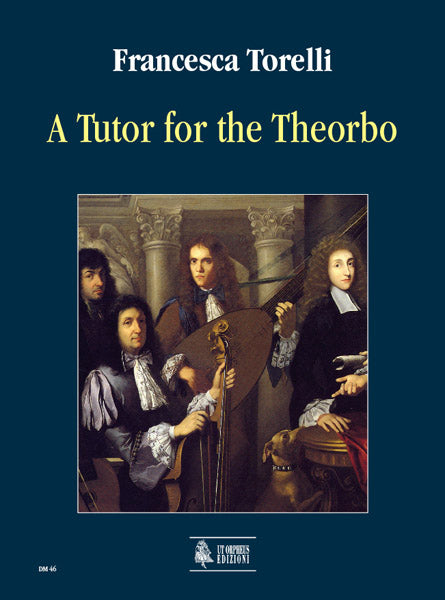
Torelli: A Tutor for Theorbo
Festive Returns Period
For orders received in December 2025, we are offering an extended returns period until Monday 12th January.
Worldwide Shipping in Time for Christmas
We ship our entire catalogue all over the world, fully tracked and insured.
UOEDM46
A Tutor for Theorbo by Francesca Torelli
This method is for anyone with musical training and at least some experience with a plucked stringed instrument who might wish to take up studying the theorbo. It is also for lutenists and theorbists of any level who wish to improve their playing.
Whilst it is also possible to begin one’s musical life playing the theorbo, it is generally preferable (particularly for children) to begin by playing plucked stringed instrument of smaller dimensions.
During the period of time in which the theorbo was commonly used, the 1600s, no practical methods, in a form we might recognise as such today, were wrien. Among the various manuscripts wrien for this instrument and compiled during the Baroque era, there are some that contain musical examples that are useful for the study of the instrument (passaggi, cadences, chords and melodic progressions). However, these writings, which are oen anonymous, contain many errors, and sometimes do not approach the subject maer systematically. Furthermore, the musical material contained in these manuscripts is oen not relevant, and so they cannot be used as study methods for the theorbo as they stand. Apart from these, there is also a certain number of texts on basso continuo playing from the 1600s which are specifically for the theorbo.
The above writings, together with the printed tablatures and musical manuscripts that we will discuss further on, have been used as the working material from which we have drawn inspiration for a progressive and systematic practical method.
Since the beginning of the 20th century a number of practical method for the lute have been published, but none for the theorbo. This may be justified by the fact that the repertoire for solo lute is much more extensive, but at the same time it is also true that theorbo music has very different characteristics. An autonomous approach to technique, repertoire and basso continuo playing is therefore required.
This is, therefore, the first-published practical playing method for the theorbo.

